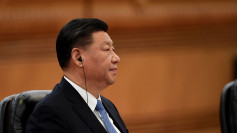Despite a robust economy and high employment, the United States Federal Reserve (the central bank) is widely expected to increase interest rates again in December and should do so three times in 2019.
Economists believe the Fed will slow down the pace of its interest rate hikes so as not to hamstring an economy on a strong growth curve.
In a new poll, a panel of economists unanimously agreed the Fed will raise the federal funds rate by 25 basis points to 2.25 percent to 2.50 percent in December. Median forecasts reveal at least three increases in 2019, which will see the federal funds rate rise to 3.00 percent to3.25 percent by end-2019. But a third rate hike in 2019 is uncertain, however, with 54 of the 102 economists in the survey forecasting that outcome.
The poll showed a wide degree of uncertainty among the economists as to the nature and timing of the rate hikes. The range of forecasts around how much the Fed will raise rates next year was unexpectedly wide. One economist expected no change to rates at all in 2019 while another predicted a significant 50 basis point hike at the June 2019 meeting.
Analysts said part of the reason for the lack of certainty as to more rate rises stems from inflation pressure, which remains tame. Wage inflation picked-up recently due to salary increases, but despite this, economists made no major upgrades to their inflation forecasts.
An economic recession is definitely in the cards, but the uncertainty is when this feared outcome will occur. Twelve respondents in the newest poll said there was a greater than 50 percent chance of a recession in the next two years.
The probability of a U.S. recession by 2020 remains low. But the risk of one occurring rose to a median 35 percent from 30 percent in the latest monthly survey of economists taken last week. It's remained at 15 percent for the next 12 months.
Growth in the U.S., the world's largest economy, remains strong and is now being driven by the tail-end of the $1.5 trillion tax cut boost. Unemployment is the lowest in nearly half a century.
But Trump's trade war with China is certain to dent U.S. growth. Economists expect U.S. growth to slow down by the end of 2019 as a trade war with China shows no signs of easing.
The U.S. economy is facing a growing number of headwinds. These include the uncertainty of trade protectionism at a time when external demand is slowing and a sense that the support from the fiscal stimulus will gradually fade.
The main risk to the upside is likely the tight jobs market and whether wages can continue rising. As a result, some economists see U.S. economic growth decelerating through 2019.
On the other hand, the forecast for this year remains optimistic. U.S. gross domestic product (GDP) will expand at an annualized rate of 2.7 percent in this fourth quarter. This growth is far lower than the 4.2 percent in the second quarter and 3.5 percent in the third.
GDP growth is forecast to slow to 2.0 percent to 2.5 percent throughout 2019 and then down to 1.8% by mid-2020, about half the latest reported rate.





